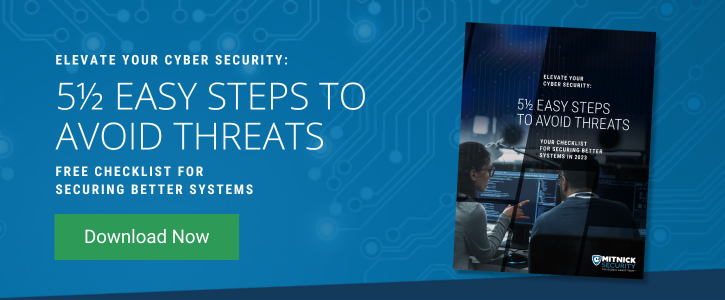When it comes to an organization’s cybersecurity, vulnerability scanning and penetration testing can protect your business from threat actors. But what are the differences, and when should you use one over the other?
Below, we’ll discuss both options and compare the pros and cons of vulnerability scanning vs penetration testing so you can strengthen the security posture of your organization one suitable test at a time.
Vulnerability Scanning and Penetration Testing
Vulnerability scanning is when you use a program to do a quick check for major gaps in your security, and is only one step in the vulnerability assessment process. This is because these scans are a high-level overview and are not designed to provide in-depth information.
In contrast, a penetration test is when cybersecurity professionals, called pentesters, simulate cyber attacks in order to detect — and in some cases, utilize — vulnerabilities within your systems for an in-depth discovery of potential weaknesses within your infrastructure.
There are several kinds of penetration tests, which allow business owners to customize their test type to fit their needs. Penetration test types include:
- External Network Penetration Testing
- Internal Network Penetration Testing
- Social Engineering Testing
- Physical Penetration Testing
- Application Penetration Testing
- Wireless Penetration Testing
- Red Team Testing
Although these are focused on a particular attack vector, they each play a part in the overall protection of your organization.
What Are the Pros and Cons of Vulnerability Scanning?
Vulnerability scanning can be a useful tool to determine if more testing is needed, but your cyber security risk assessment shouldn’t stop there.
The pros of vulnerability scanning may include:
- A cost-effective test.
- The ability to run a scan any time one is needed to assess new updates.
- Typically, these tests are completed routinely (weekly, monthly or quarterly).
The cons of vulnerability scanning may include:
- Potential false-positive test results.
- Most scans show only 15% of vulnerabilities.
- Deeper issues that may not have been detected.
- The findings need to be evaluated and interpreted correctly.
- The test does not come with suggestions for strengthening your cyber security posture.
Vulnerability scanning by itself is not enough to protect your organization. However, when vulnerability scans are paired with a vulnerability assessment, they can help protect your organization from standard threats.
Vulnerability assessments involve cybersecurity experts examining, analyzing, and providing your organization with suggestions based on the test. This is an effective way to uncover deeper issues and receive recommendations for solutions in the form of a vulnerability assessment report. It’s recommended that your organization run a vulnerability assessment by a professional or team of professionals every quarter. This test should be part of a proactive prevention plan to manage new threats and gather insights from the reports to tackle challenges as they arise.
What Are the Pros and Cons of Penetration Testing?
Penetration testing is deep-dive — thorough testing of your systems using a tailored pentest framework — to uncover the hidden vulnerabilities within your organization.
The pros of penetration testing may include:
- An in-depth look and test of your systems by a team of expert penetration testers.
- Testing that is customized to match the needs of your organization.
- Provides a demonstration of how vulnerabilities can be exploited by threat actors.
- Includes a pentest report in the post-attack phase to offer detailed remediation recommendations.
The cons of penetration testing may include:
- It typically takes longer than vulnerability scanning.
- You may find so many vulnerabilities that the recommendations in the report can feel overwhelming. We break down the recommendations in the short term, midterm, and long-term goals to work towards, to ensure your internal security team can create manageable security plans.
Pentests are crucial to protecting an organization long-term. However, because this in-depth analysis of your systems takes time, it is suggested that a penetration test be run yearly or as needed.
Vulnerability Scanning vs Penetration Testing
When comparing vulnerability scanning to pentesting, it’s no secret that penetration testing offers a deeper look under the surface of your cyber security. However, when vulnerability scanning is part of a vulnerability assessment, it becomes an equally important component of protecting your organization.
Vulnerability scanning and penetration testing work most efficiently when used together as part of your cybersecurity plan. In short, a vulnerability assessment is a great way to start strengthening your cybersecurity posture and for routine security maintenance, while penetration testing should be used to catch more complex issues, and as a “last” test once all previously found issues have been addressed.
If vulnerability scanning is not done, you could be left with a backlog of hundreds of issues to address after a pentest. Similarly, vulnerability scans without a thorough pentest could leave your organization open to threat actors.
Protect Your Organization With a Well-Rounded Plan
Comparing vulnerability testing vs penetration testing is only the first step to understanding what your organization needs to protect itself. While both are needed to keep your organization safe, there is more you can do to avoid becoming another data breach headline.
To stay one step ahead of threat actors, you’ll need to know how to improve security awareness within your organization and what steps to take when you suspect underlying cybersecurity weaknesses.
Get your free checklist today to discover more and begin improving your organization’s cyber security posture.




